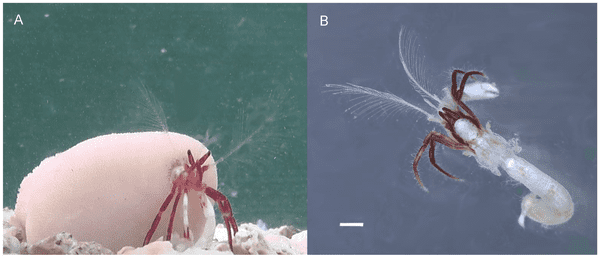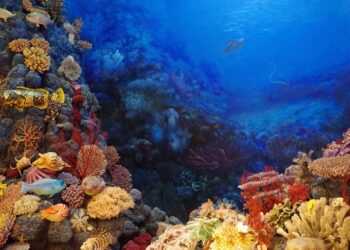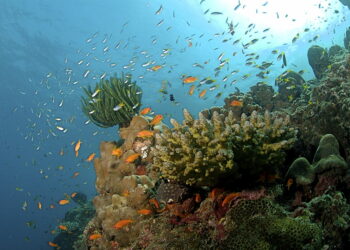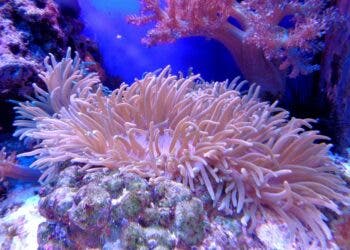Hermit crabs are famous for constantly changing ‘homes’ as they outgrow the discarded shells of various other species like snails. A newly discovered species that lives in the Amami Islands, a subtropical island chain north of Okinawa, Japan, is no squatter. According to Japanese biologists, this hermit crab is the first to take residence in a living, growing coral home. This hermit crab has finally found a permanent home.

The clever Diogenes heteropsammicola found a lucrative arrangement with two kind landlords, Heteropsammia and Heterocyanthus. The two coral species, however, typically have a different tenant, a symbiotic marine worm called sipunculan.
The peanut shell-shaped sipunculan usually lives in crevices in rocks or in empty shells. Some lucky fellows, though, take on the coral up for the ride — a rather sweet deal for both parties. The worm gains both shelter and protection, thanks to the coral’s stinging tentacles, while the coral itself is offered transportation and a guarantee that it won’t get stuck in seafloor sediment.
A hermit crab with a home for life. Kudos!
Everybody wins in this relationship. Too bad a home wrecker like D. heteropsammicola had to barge in and ruin it for the peanut worm. According to the biologists at Kyoto University who discovered the new hermit crab species, after D. heteropsammicola evicts the worm (or finds an unoccupied coral), it permanently turns the two coral species into its home.
There are many reasons to believe this has been going on for some time, judging from several bodily features. The crab has a long and thin body with red-white claws that are significantly longer than its relatives’. Its telson — the posterior-most division of the body of an arthropod — is symmetrical, whereas other crabs have a lower abdomen shaped like a corkscrew that twists towards the right-hand side. Crabs that go through various shell homes need this abdomen configuration to match the spiraling direction of the snail shell. D. heteropsammicola, on the other hand, is adapted to coral cavities that twist both left and right.
“A shift in symbiont acquistion strategy by the corals has allowed the hermit crab to take over the transportation role of the usual sipunculan partners. Our data suggest that the corals are obligately symbiotic with sipunculans and this hermit crab, both of which are also obligately symbiotic with the two genera of the corals,” the authors wrote in PNAS.

When the Japanese researchers studied the coral and crab in a controlled environment, i.e. an aquarium, they witnessed how the crustaceans would brush debris and sediments off their gracious coral hosts. This crab obviously knows what it’s doing. It better takes care of the coral, too, since it grows in sync with the anthropod. A hermit no more!
“By becoming symbiotic with the corals, the hermit crab has probably gained extra security through protection by coral nematocysts and its more permanent lodging means that it no longer needs to change shells as it grows in size,” the scientists concluded.






